By Dr. Devin de Zwaan and Dr. Davide Scridel, Department of Forest and Conservation Sciences, University of British Columbia
Global warming is putting pressure on all ecosystems, particularly at higher latitudes and elevations where temperatures are increasing by twice the global rate. For Arctic and alpine birds, even moderate increases in temperature can impose severe challenges with regulating body temperature since these birds are adapted to survive cold temperatures and not to off-load heat. The indirect effects of a changing climate are potentially more concerning, influencing the availability of food resources and suitable habitat for many species. Warmer temperatures at high elevations are likely to contribute to an advancing treeline, with trees growing higher and higher on mountain slopes. This would reduce the amount of habitat above the treeline for alpine birds, to the point that some will eventually be forced off the mountain.
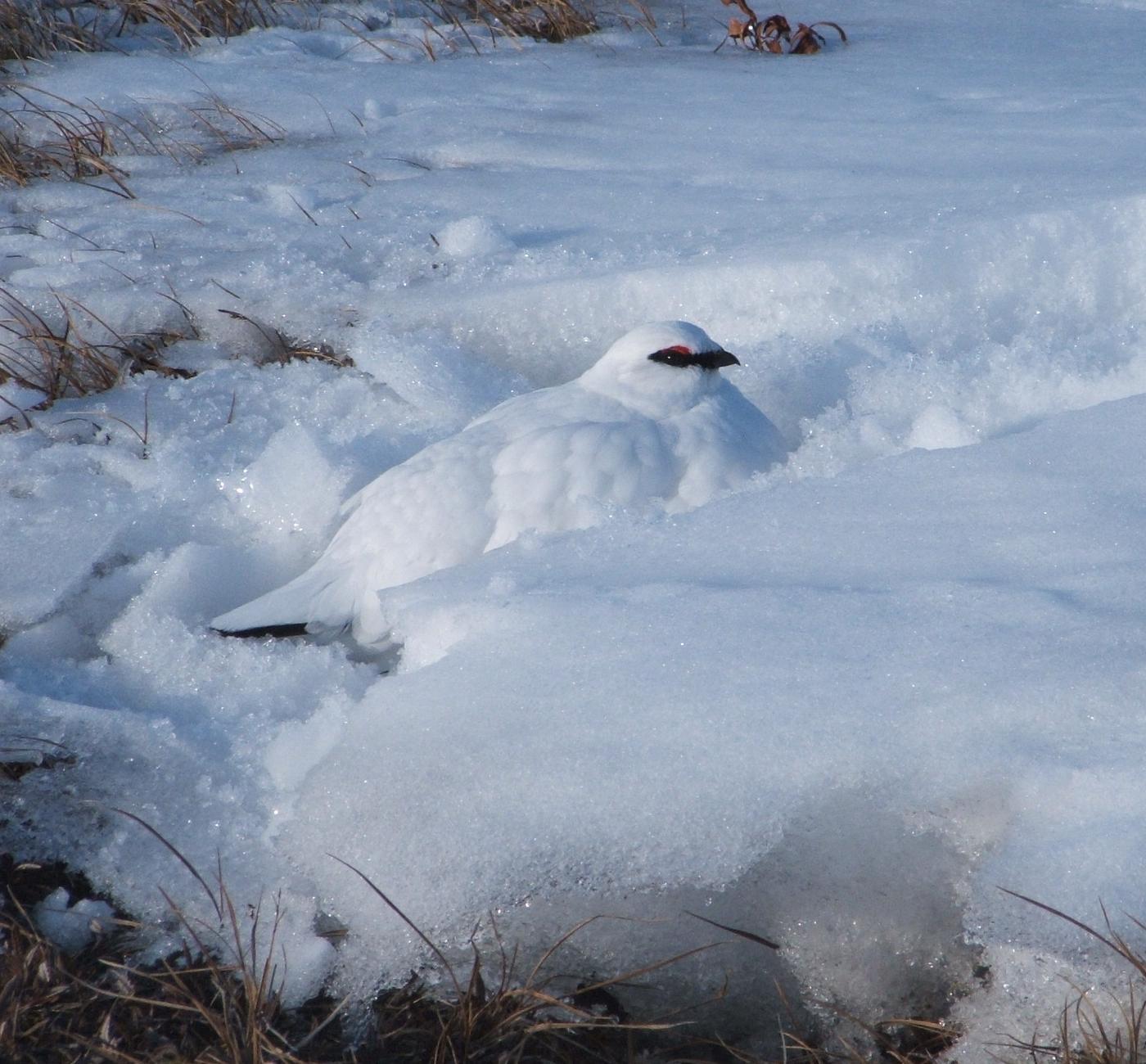
Rock Ptarmigan (male) Photo: Scott Wilson
Given these pressures, addressing how alpine bird distributions will shift in response to future climate and habitat changes is critical for developing effective conservation strategies. Unfortunately, due to the remote access of many high elevation habitats, our understanding of current distributions for most alpine bird species is incomplete. British Columbia is one of the most mountainous regions in North America, with about 75% of its landmass occurring above 1,000 m in elevation. It is also one of the few places in the world where you can find all three ptarmigan species (plump grouse belonging to the genus Lagopus), sometimes even on the same mountain: Willow Ptarmigan, Rock Ptarmigan, and White-tailed Ptarmigan. These iconic, alpine species are cold-adapted and highly specialized to living year-round in the challenging, exposed habitat above treeline.
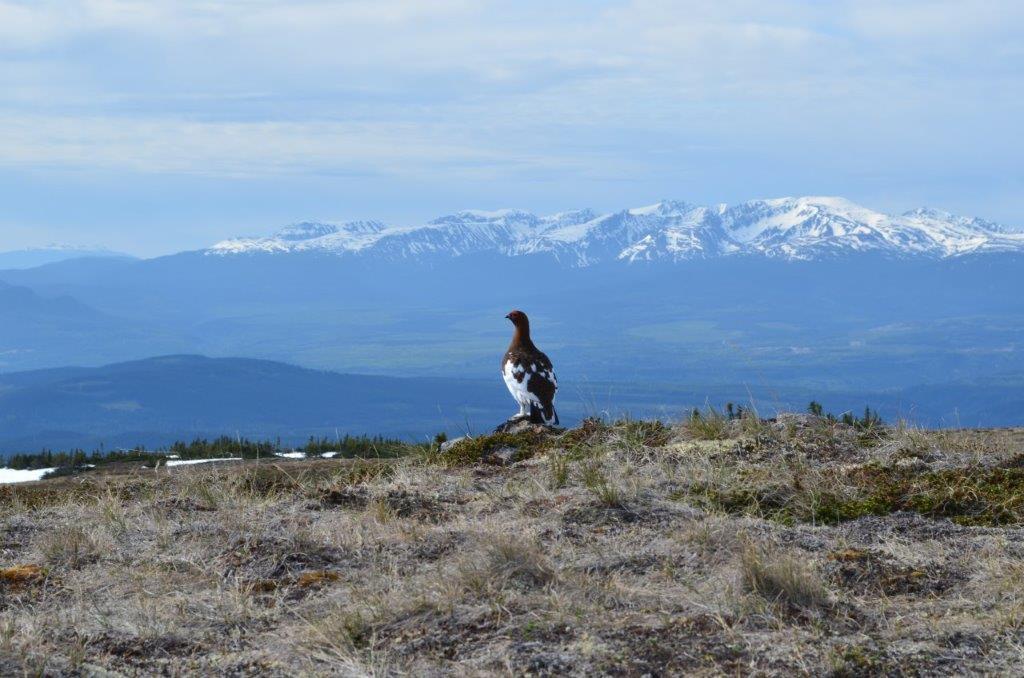
Willow Ptarmigan overlooking an alpine landscape. Photo: Devin de Zwaan
In a recent paper, Dr. Davide Scridel and coauthors estimated the current distributions of all three ptarmigan species and predicted how their ranges may shift by the 2080s under the combined influence of changing weather patterns and vegetation on habitat suitability. They also investigated how well our existing system of protected areas (e.g., Federal and Provincial Parks) represent current and future ptarmigan habitats. Observations from 1970 to 2019 came primarily from Citizen Science sources, including amateur mountaineers and naturalists, the BC Breeding Bird Atlas, and platforms like iNaturalist and eBird. Fine-scale climate (temperature, precipitation) and vegetation data from the past 50 years were combined with future predictions for the 2080s under the “business as usual” climate warming scenario. BC is unique in that a team out of the University of British Columbia has developed freely accessible vegetation projections into the future for the entire province. These details were used to build species distribution models that predicted both the current and future distributions of each ptarmigan species.
Currently, White-tailed Ptarmigan have the most extensive range in British Columbia, due in part to their greater prevalence in the south of the province relative to the other two species. White-tailed Ptarmigan also occur at the highest elevations, linked to the coldest temperatures, followed by Rock and Willow ptarmigan. All three were associated with rock and tundra ground cover, but Willow Ptarmigan had a greater tendency for shrubby habitats, and thus a comparatively less open habitat structure.
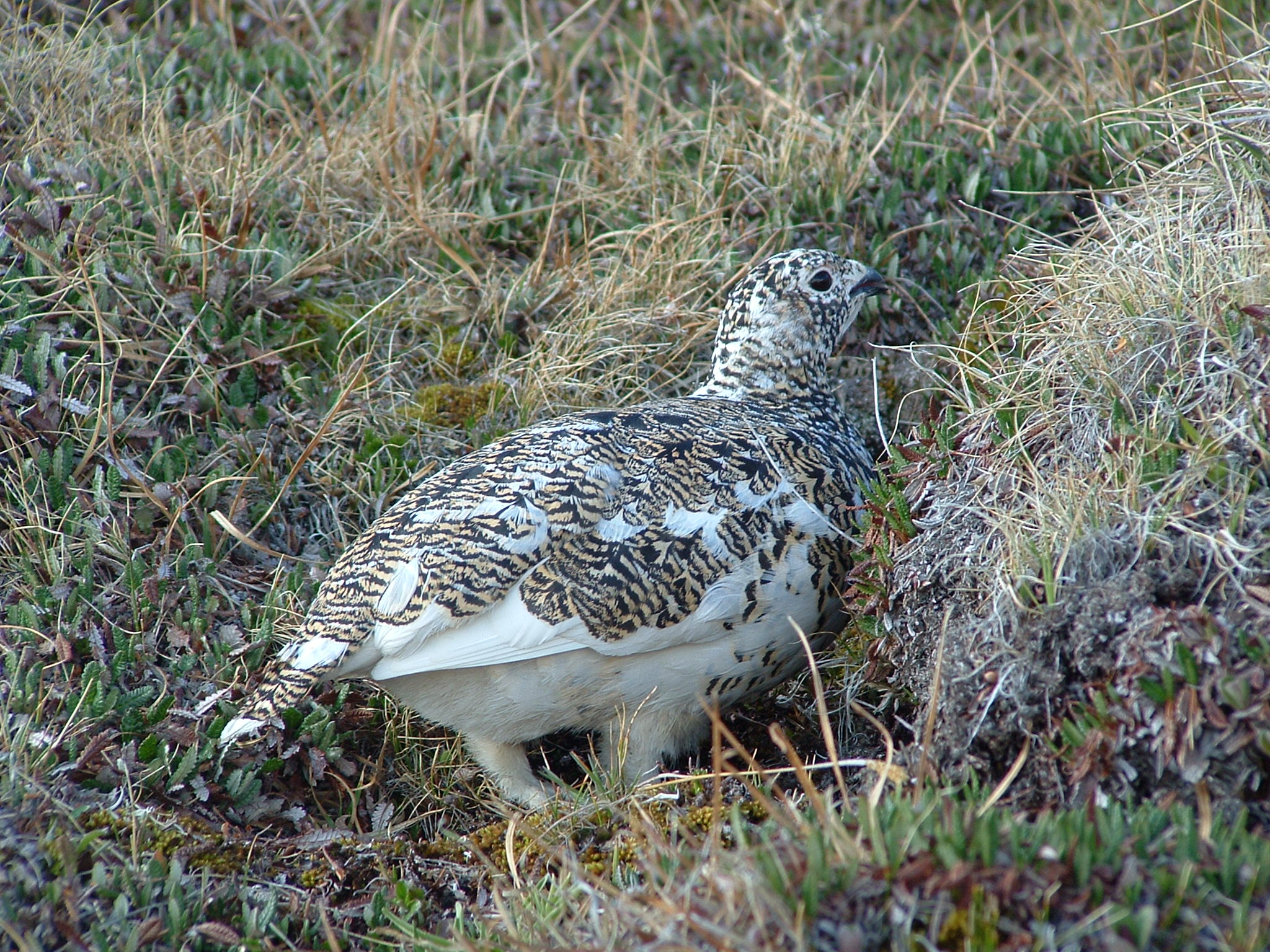
White-tailed Ptarmigan (female) Photo: Scott Wilson
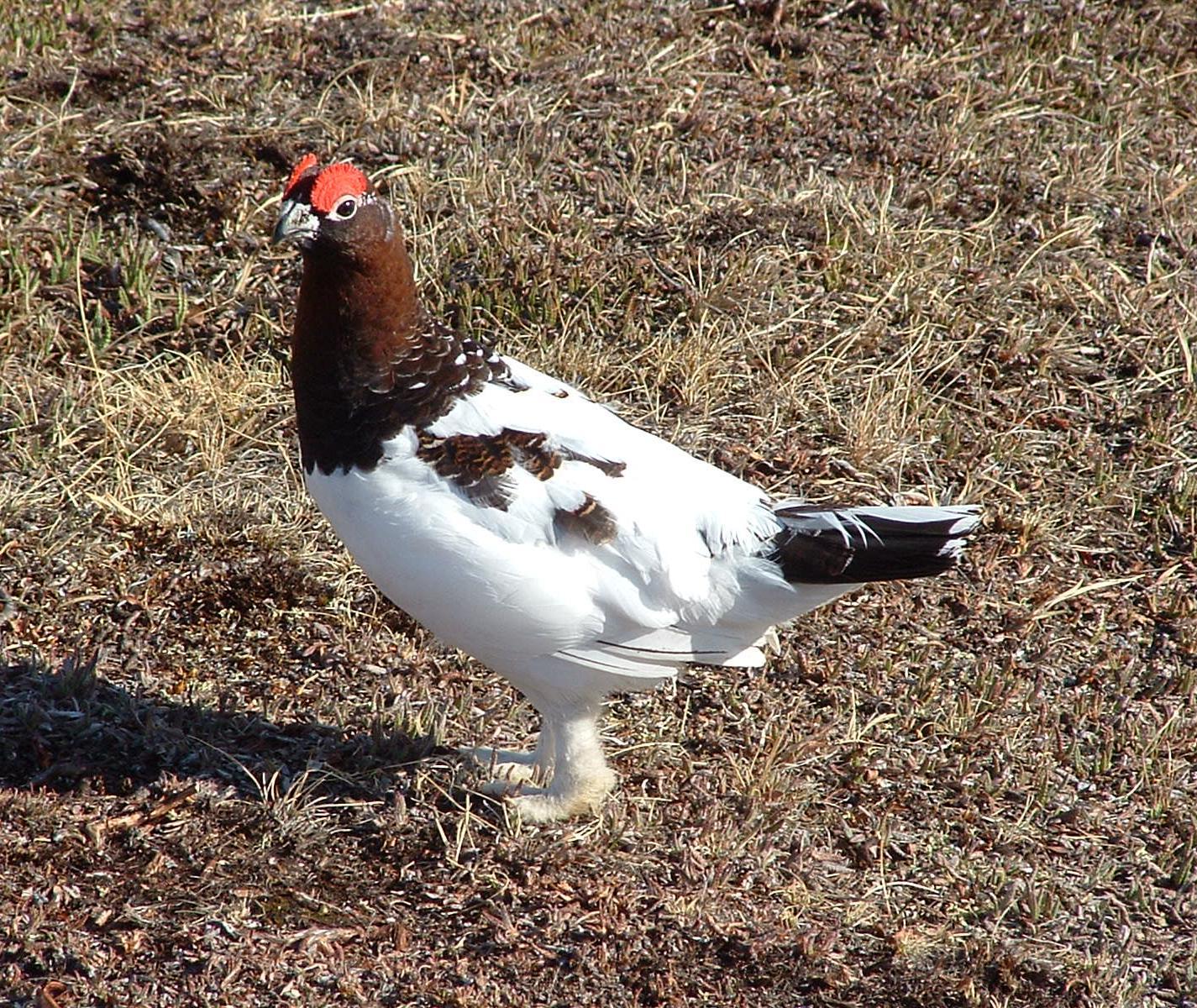
Willow Ptarmigan (male) Photo: Scott Wilson
Predictions suggest ptarmigan ranges will shift upward in mean elevation by about 250 m and northward by 1.2° latitude, essentially following cooler climates. These changes were underlined by steep declines in range size, translating to an 85.6% loss in suitable habitat for White-tailed Ptarmigan, a 79.5% loss for Rock Ptarmigan, and a 61.3% loss for Willow Ptarmigan. The less drastic range loss for Willow Ptarmigan was largely due to range expansions into currently unsuitable areas in the north, likely linked to their ability to inhabit more shrubby landscapes at lower elevations. Finally, only about 29% of the range for each species is predicted to occur in established protected areas by 2080.
What does this mean for the future of ptarmigan in BC? While these results are distressing, range declines were slower within than outside protected areas, suggesting that habitat features within protected areas may have some capacity to buffer the effects of climate change on ptarmigan. An expanded, well-connected system of protected areas that targets high elevation priority habitats will therefore limit the impacts of human-related activities (e.g., mountain-top mining) while potentially preserving areas with the micro-climate needed for the survival of ptarmigan and other alpine wildlife.
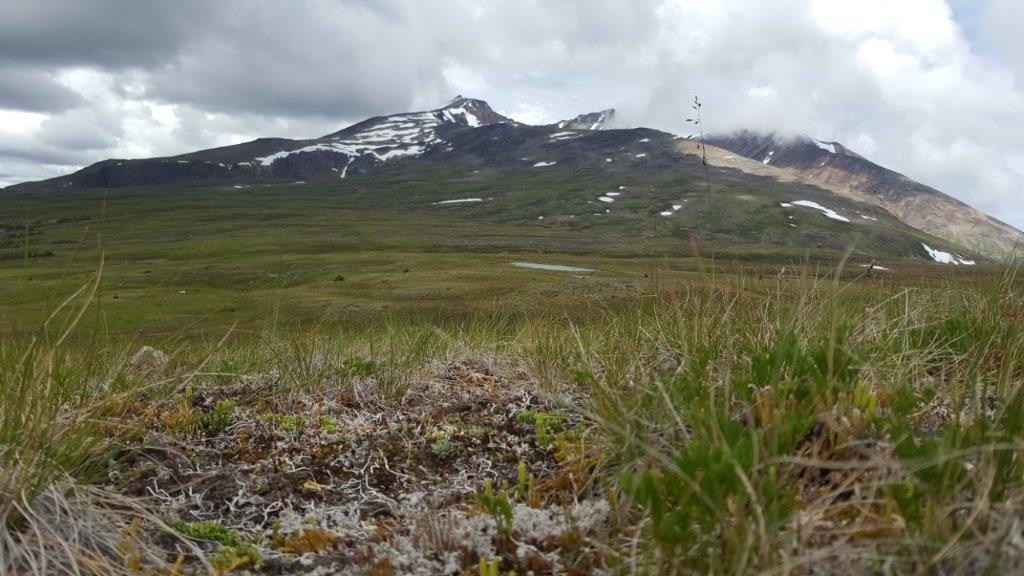
Alpine landscape including habitat for all three ptarmigan species at different elevations Photo: Devin de Zwaan
This research would not be possible without Citizen Scientists like yourself contributing to platforms like eBird. However, it should be noted that nearly 50% of all ptarmigan sightings on eBird could not be used for this study because surveys covered a distance that was too large, tying the location of the sightings to coordinates that were not representative of alpine habitats (e.g., valley bottoms). To make checklists more useful for this type of research and for conservation initiatives, birders should submit their individual checklists for distinct habitat types or limit them to less than 2 km or 30 minutes.
You can learn more about this study by reading the open access scientific paper: https://doi.org/10.1111/ddi.13366
